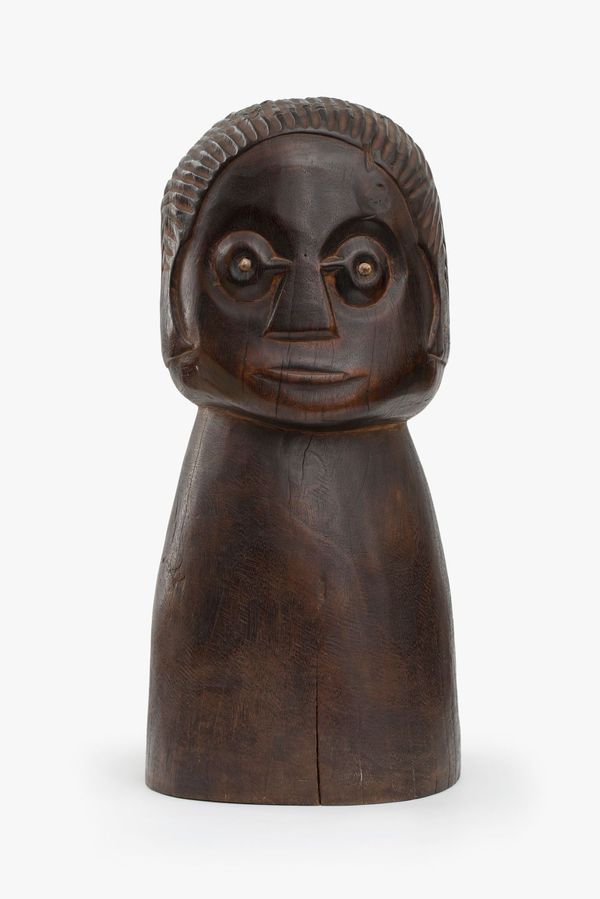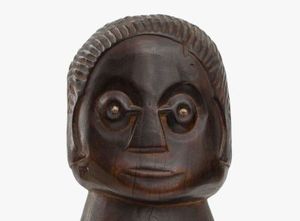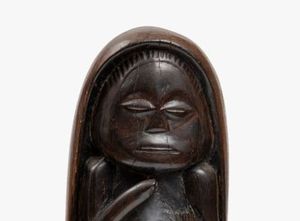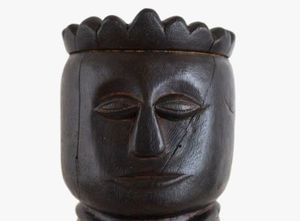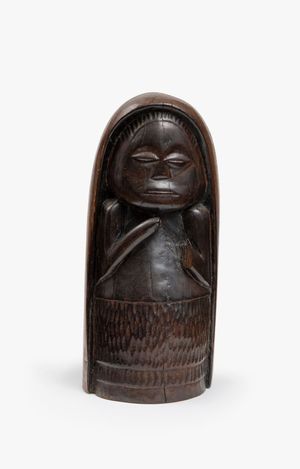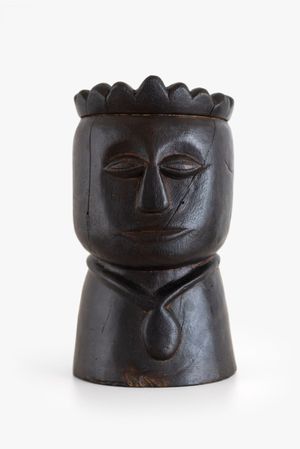Born on the island of Itaparica, Bahia, Agnaldo Manuel dos Santos was a sculptor known for his woodworking skills and for his outstanding knowledge of Brazilian popular culture and African iconography. His work communicates these interests in an original, synthetic, and profoundly modern way.
Dos Santos’ close contact with art began in 1947, when he met the artist Mário Cravo Neto in Salvador, where he relocated in search of better opportunities. He was initially hired as a guard and caretaker at Cravo Neto’s studio, but soon began to work as his assistant, when Cravo Neto noticed his aptitude for handling different materials, especially wood. Immersed in Cravo Neto's studio - one of the most important gathering places for members of Bahia’s artistic and intellectual circles – dos Santos began to make his own works.
Just three years after producing his first sculptures, he participated in the IV Salão Baiano (1956) and won his first prize. Also in 1956, he held his first solo exhibition at Petite Galerie, an influential gallery in Rio de Janeiro run by Franco Terranova. The event drew the attention of art critics, dealers and collectors, and, from then on, he exhibited many times in galleries in Salvador, Rio de Janeiro, and São Paulo. In 1957, he took part in the 4th São Paulo Biennial and was awarded the sculpture prize for his work Pilando Dendê. Other remarkable exhibitions of his work included the solo show "Agnaldo: esculturas" (1961) at Museu de Arte Moderna da Bahia, organized by architect and designer Lina Bo Bardi, and his participation in exhibitions in the USA and Nigeria in 1962. Posthumously, in 1966, dos Santos’s works were featured in the First World Festival of Black Arts in Dakar, where he represented Brazil alongside Heitor dos Prazeres and Rubem Valentim, winning the sculpture prize for his work Cabeça de animal. In 2023, dos Santos’ work was included in the group show Black Orpheus: Jacob Lawrence and the Mbari Club, at the Chrysler Museum of Art and New Orleans Museum of Art.
Dos Santos died prematurely, at the height of his career, in 1962. For a long time, his production was not thoroughly examined. The modern quality of his work was rejected, as the prevailing critical account insisted on affirming an atavistic and ancestral, almost mystical, relationship with Africa, ignoring the fact that the continent’s art production had been continuously examined and given new meaning by dos Santos. In this sense, a more consistent understanding - which was the exception in the 1950s and 1960s - is beginning to emerge with his posthumous participation in the group show "A Mão Afro-Brasileira", at MAM SP, curated by Emanoel Araújo, and in the solo retrospective "Agnaldo Manuel dos Santos: inconsciente revelado", organized by the same curator at Pinacoteca de São Paulo, and more recently in the show "Histórias afro-atlânticas", at MASP and the Tomie Ohtake Institute, which provide new perspectives on artists from the Black diaspora. In 2023, his work was the subject of a comprehensive retrospective at MAM Bahia, “Agnaldo Manuel dos Santos – A conquista da modernidade.” As recent research by scholar Juliana Bevilacqua has shown, dos Santos was fully immersed in Salvador's artistic milieu: "He visited exhibitions, studied traditional African sculpture and modern sculpture. He socialized with artists, exchanged ideas, and dialogued with them".
Dos Santos was interested in the study of Catholic images and traveled to collect Catholic icons and images of ex-votos in abandoned churches in rural areas in Bahia, together with Cravo Junior, Carybé, Pierre Verger, among other intellectuals and scholars of popular culture. Another feature of dos Santos' sculpture work is his carrancas (figureheads) produced after his contact with the master Francisco Biquiba Dy Lafuente Guarany, with whom he developed a relationship of friendship and mutual admiration. It was with Mestre Guarany that he learned about the world of carved wood figureheads, characteristic of the São Francisco River region.
Contact with the iconography of ex-votos played a fundamental role in dos Santos’ choice to pursue an artistic career and is a constant and cohesive reference throughout his production. However, his appropriation of religious images has unique characteristics. Without limiting himself to any kind of religious dogma, and with a strong formal concern, dos Santos reveals his distance from strictly spontaneous popular manifestations, demonstrating the awareness of his artistic choices and the modern character of his preferences. Agnaldo Manuel dos Santos' works are now part of important collections such as Museu Afro Brasil, MAM Bahia, Pinacoteca de São Paulo as well as important private collections.
